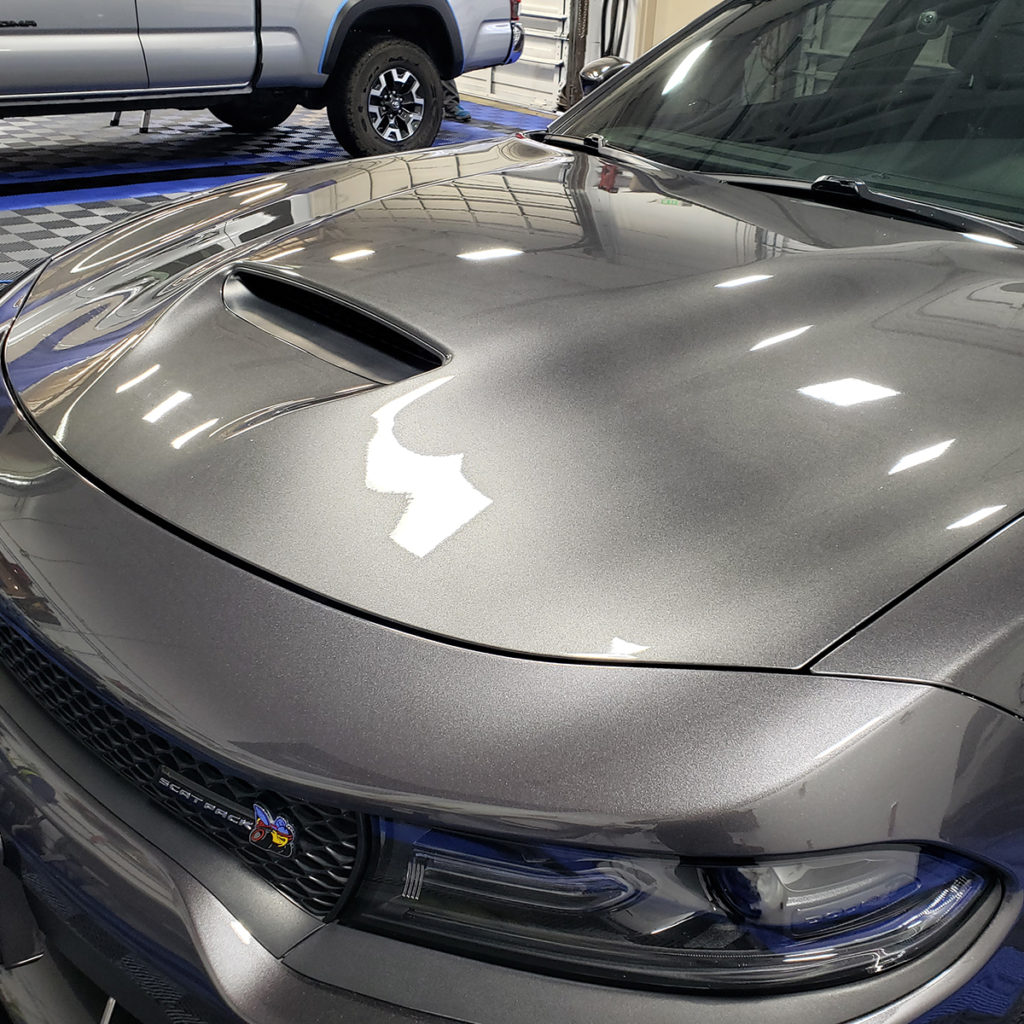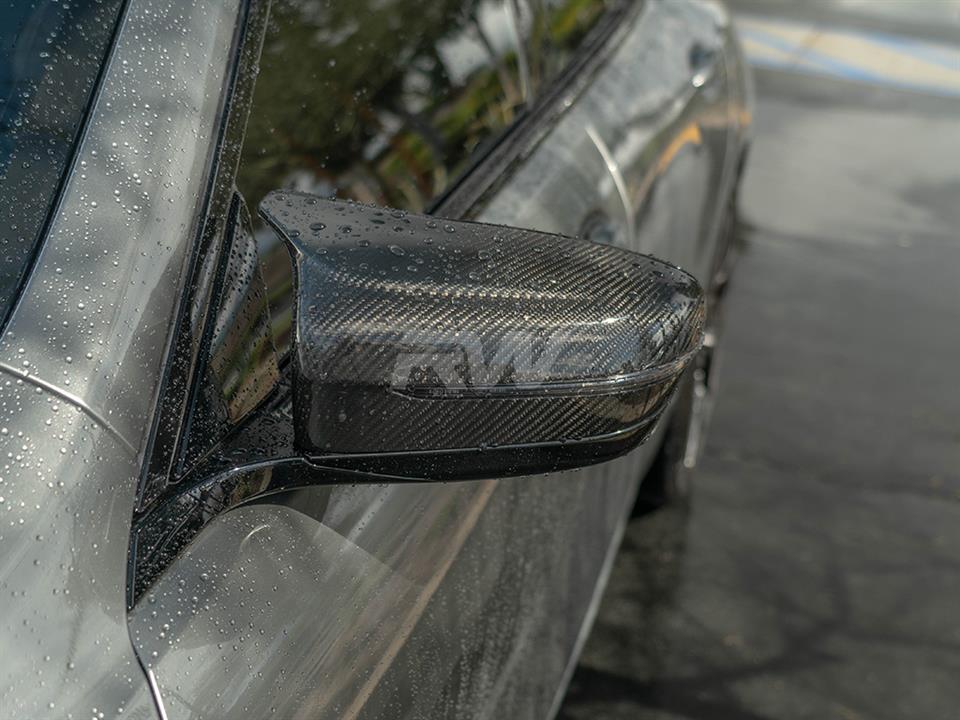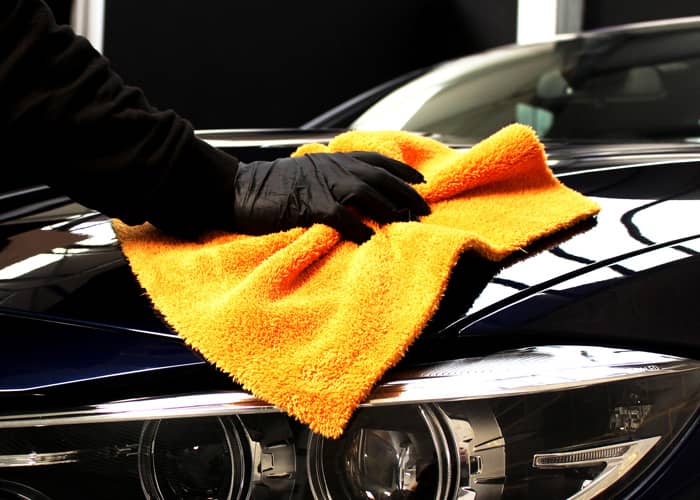Experience Ceramic Pro: Unmatched Security for Your Auto's Paint
Experience Ceramic Pro: Unmatched Security for Your Auto's Paint
Blog Article
The Science Behind Ceramic Finishing: Exactly How It Improves Your Automobile's Aesthetic and Sturdiness

Recognizing Ceramic Layer Chemistry
The chemical composition of ceramic finishes plays an essential duty in establishing their durability and protective residential properties on lorry surfaces. Ceramic finishes are usually made up of silicon dioxide (SiO2), which is a main part supplying hardness and warmth resistance. Other ingredients such as titanium dioxide, silicon carbide, and polysilazanes are often added to boost particular residential properties like UV hydrophobicity, resistance, and adhesion.
Silicon carbide is known for its abrasion resistance, making the ceramic finishing hard and sturdy versus physical damages. Polysilazanes are made use of to improve the finishing's versatility and bond to the lorry's surface area, guaranteeing durable defense. Understanding the chemistry behind ceramic coverings is important for both applicators and car owners to value the value and advantages these coverings offer in maintaining the aesthetic allure and durability of automobiles.
Improved Gloss and Mirror-like Finish
Understanding the chemical composition of ceramic finishings not only discloses their safety homes however also clarifies exactly how they add to achieving a boosted gloss and mirror-like surface on car surface areas. The trick to the shiny impact lies in the nano-ceramic bits existing in the layer. These bits load in microscopic pores and imperfections on the surface area, producing a smooth and level surface. As light hits the coated surface area, it shows uniformly, offering the appearance of a deep, glossy sparkle. Furthermore, the chemical structure of ceramic coatings allows them to develop a strong bond with the vehicle's paintwork, preventing oxidation and maintaining the quality of the coating in time. This bond additionally withstands ecological contaminants, such as dirt and crud, that can dull the sparkle of the car. The mix of filling buildings, light reflection, and durable security makes ceramic finishings a popular selection for those looking for a mirror-like and vivid finish for their vehicles.

Influence On Paint Security and Longevity
Ceramic coverings for lorries substantially enhance the long life and protection of the paintwork. By developing a chemically immune layer on top of the vehicle's clear layer, ceramic coverings work as a barrier versus numerous environmental pollutants that can harm the paint in time. These layers are developed to drive away dirt, water, road salt, bird droppings, and various other harmful materials, decreasing the danger of paint oxidation and corrosion. Furthermore, the solidity of ceramic finishings gives a level of scrape resistance, assisting to keep the vehicle's appearance for an extensive period.
In terms of long life, ceramic coverings provide a resilient solution compared to traditional waxes or sealers. On the whole, the safety homes of ceramic finishes contribute significantly to maintaining the automobile's paintwork and improving its visual allure over an extensive duration.
Resistance to Contaminants and Harsh Components
With the safety shield given by ceramic layers versus different environmental impurities and aspects, automobiles are able to preserve their excellent appearance regardless of direct exposure to extreme conditions. Ceramic coverings produce a strong barrier that drives away water, dust, dust, and various other usual pollutants, preventing them from bonding to the vehicle's surface area. discover here This hydrophobic nature not only makes cleansing easier but additionally lowers the risk of water places over at this website and etching caused by acidic pollutants. Furthermore, the chemical resistance of ceramic layers assists secure the paint from bird droppings, insect splatter, tree sap, and other destructive substances that can damage the surface gradually.
Furthermore, ceramic layers supply UV defense, shielding the vehicle's paint from the sun's hazardous rays that can cause fading and oxidation. This resistance to UV damage aids keep the color strength and sparkle of the paint for longer periods. By creating a sturdy and resilient barrier, ceramic coatings guarantee that the lorry's outside continues to be secured versus a vast array of impurities and rough elements, preserving its aesthetic appeal and durability.
Application Methods and Maintenance Tips
For optimum outcomes when applying ceramic finishes to automobiles, making use of proper strategies and sticking to advised upkeep techniques are vital. The application procedure of ceramic finishing needs attention to information and precision. Before using the ceramic finishing, it is important to completely tidy and decontaminate the vehicle's surface to make certain proper bond. This involves washing, claying, and perhaps brightening the paint to create a smooth canvas for the ceramic finishing to bond successfully.
When applying the ceramic coating, it is advised to operate in tiny sections to ensure also protection and to avoid the item from drying out as well promptly. Making use of applicator pads or microfiber towels, apply the finish in a crisscross or up-and-down activity, depending on the product's guidelines. After the finishing is used, permit it to treat for the specified time before rubbing off any type of deposit.
In terms of upkeep, regular washing with pH-neutral soaps and preventing extreme chemicals or rough devices will help maintain the ceramic covering's stability. Routine examinations for any damage or endure the finishing can also help preserve its protective homes gradually.

Conclusion
To conclude, ceramic coating boosts a car's visual appeal and longevity through its chemical make-up, providing a glossy coating and safeguarding the paint from ecological contaminants. why not check here Its resistance to rough elements and simplicity of upkeep make it a popular selection for automobile proprietors looking to protect the appearance of their cars. On the whole, ceramic finishing is a scientifically backed service for keeping the appearance and long life of your vehicle.
Recognizing the chemistry behind ceramic finishes is crucial for both applicators and car proprietors to value the value and benefits these finishes use in maintaining the aesthetic appeal and durability of automobiles. (ceramic pro)
Recognizing the chemical make-up of ceramic coverings not only exposes their protective properties but also sheds light on exactly how they contribute to accomplishing an improved gloss and mirror-like coating on vehicle surfaces. By creating a chemically resistant layer on top of the vehicle's clear layer, ceramic coverings act as a barrier versus different ecological contaminants that can damage the paint over time. Generally, the protective properties of ceramic coatings contribute considerably to preserving the car's paintwork and boosting its visual allure over an extensive period.
In conclusion, ceramic covering enhances a vehicle's visual charm and longevity via its chemical structure, offering a glossy coating and securing the paint from environmental contaminants.
Report this page